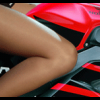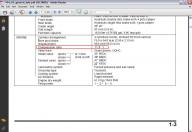-
Număr conținut
5.614 -
Înregistrat
-
Ultima Vizită
Tip conținut
Profiluri
Forumuri
Calendar
Orice postat de strumfuadi
- Anterioară
- 3
- 4
- 5
- 6
- 7
- 8
- 9
- 10
- 11
- 12
- 13
- Următoarea
-
Pagina 8 din 132
-
120/70/17 + 180/55/17 La preturi bune gasesti la @mac, dar am gasit la preturi bune si aici..
-
Esti offtopic, dar merita facut sticky..
-
Fuck no, 20% din activitate a fost pe topicul asta? Wow! Hai baieti, e frumos afara, cald, bine, hai sa ne plimbam! Pe jos..
-
Piua pe ouate?
-
droom a avut dreptate in postul lui sustinand faptul ca picaturile ingheata DUPA ce ating ceva, nu INAINTE, in aer.
-

Ulei de motocicleta speciall?
topic a răspuns lui strumfuadi în andrei_pro89ul Service si intretinere curenta
PAO sunt grupa IV, nu sunt rafinate din petrol cum e grupa III (hidrocracate). Iar Esterii mai au si proprietati polare, se "lipesc" de metal si mentin pelicula, spre deosebire de uleiurile conventionale care se scurg complet in baie. Mai jos niste info despre uleiuri. All oils are comprised of basestocks and additives. Basestocks make up the majority of the finished product and represent between 75-95%. Not all basestocks are derived from petroleum, in fact the better quality ones are synthetics made in laboratories by chemists specifically designed for the application for which they are intended. Basestocks are classified in 5 Groups as follows: Group I These are derived from petroleum and are the least refined. These are used in a small amount of automotive oils where the applications are not demanding. Group II These are derived from petroleum and are mainly used in mineral automotive oils. Their performance is acceptable with regards to wear, thermal stability and oxidation stability but not so good at lower temperatures. Group III These are derived from petroleum but are the most refined of the mineral oil basestocks. They are not chemically engineered like synthetics but offer the highest level of performance of all the petroleum basestocks. They are also known as “hydrocracked” or “molecularly modified” basestocks. They are usually labelled/marketed as synthetic or semi-synthetic oils and make up a very high percentage of the oils retailed today. Group IV These are polyalphaolefins known as PAO and are chemically manufactured rather than being dug out of the ground. These basestocks have excellent stability in both hot and cold temperatures and give superior protection due to their uniform molecules. Group V These special basestocks are also chemically engineered but are not PAO. The main types used in automotive oils are diesters and polyolesters. Like the group IV basestocks they have uniform molecules and give superior performance and protection over petroleum basestocks. These special stocks are used in all aviation engines due to their stability and durability. Esters are also polar (electro statically attracted to metal surfaces) which has great benefits. They are usually blended with Group IV stocks rather than being used exclusively. It is common practice for oil companies to blend different basestocks to achieve a certain specification, performance or cost. The blending of group IV and V produces lubricants with the best overall performance which cannot be matched by any of the petroleum basestock groups. So to expand upon the above, I will now explain what group 3, 4 and 5 are all about: Group 3 = Hydrocracked synthetic, molecularly converted mineral oil. “HYDROCRACKED” (HC) or MOLECULARLY CONVERTED (MC) BASESTOCKS There are many petroleum oils available on the market that are so pure and refined, they can now be passed off as synthetics. Petroleum oil basestocks can be put through a super-extreme refining process called “hydrocracking”. These are extremely high performance petroleum basestocks, but they are not truly synthetic the way that most people understand the term and will not necessarily perform to the same level as a premium synthetic oil like PAO (poly alfa olefins) or Esters. Hydrocracking involves changing the actual structure of many of the oil basestock molecules by breaking and fragmenting different molecular structures into far more stable ones. This results in a basestock which has far better thermal and oxidative stability as well as a better ability to maintain proper viscosity through a wide temperature range - when compared to a typical mineral basestock. SYNTHETIC HYDROCARBONS or POA’s (Poly Alpha Olefins) These are, in effect, very precisely made equivalents to the most desirable mineral oil molecules. As with esters, they work very well at low temperatures, and equally well when the heat is on, if protected by anti-oxidants. The difference is, they are inert, and not polar. PAO’s work best in combination with esters. The esters assist load carrying, reduce friction, and cut down seal drag and wear, whilst the PAO’s act as solvents for the multigrade polymers and a large assortment of special compounds that act as dispersants, detergents, anti-wear and oxidant agents, and foam suppressants. Both are very good at resisting high-temperature evaporation, and the esters in particular will never carbonise in turbo bearings even when provoked by anti-lag systems. Esters All jet engines are lubricated with synthetic esters, and have been for 50 years, but these expensive fluids only started to appear in petrol engine oils about 20 years ago. Thanks to their aviation origins, the types suitable for lubricants work well from –50 degC to 200 degC, and they have a useful extra trick. Due to their structure, ester molecules are “polar”; they stick to metal surfaces using electrostatic forces. This means that a protective layer is there at all times, even during that crucial start-up period. This helps to protect cams, gears, piston rings and valve train components, where lubrication is “boundary” rather than “hydrodynamic”, i.e. a very thin non-pressure fed film has to hold the surface apart. Even crank bearings benefit at starts, stops or when extreme shock loads upset the “hydrodynamic” film. -

Ulei de motocicleta speciall?
topic a răspuns lui strumfuadi în andrei_pro89ul Service si intretinere curenta
Mi'e greu sa comentez fiecare aberatie scrisa in acest post savant, doar am bolduit'o pe cea suprema. Normal, trebuie sa-si vanda si ei GTX'urile, nu? Interesant este de stiut data la care respectivul a facut acea declaratie, in ziua de azi motoarele cam vin rodate. Masina mea a venit din fabrica cu ulei full sintetic ester Fuchs 0w-30 (fostul Silkolene auto), ar trebui sa cred ca cei de la Honda sunt cretini sau sa ma astept sa nu se rodeze niciodata? Am un amic dilibaur cu acelasi model de masina si i'a facut rodajul 50 de metri pana a iesit pe poarta dealerului dupa care a rupt'o numai in limitare la 8200rpm. Acuma masina are 67000km si motorul merge absolut excelent. -
Same kid, dar ce mai creste! Superba mobreta, sa o stapanesti sanatosT E ceva sa scoti din ea consum de 954 mers "normal".. PS: A, si neaparat sa'i pui doar ulei Agip!
-
PS: da, el o vinde!
-
http://www.bikeshop.ro/handler.php?tip=am&...w&ID=337456 Este a unui prieten din Constanta, mobra giugiuc, ti'o recomand!
-

Detinatori de Honda 900RR Fireblade
topic a răspuns lui strumfuadi în emylyoul Motociclete de viteza
Pitzi nu face diferenta intre 600 si 1000RR, "iesi mai ieftin" cu 600.. -

Detinatori de Honda 900RR Fireblade
topic a răspuns lui strumfuadi în emylyoul Motociclete de viteza
La 9000 in a 2'a are cam 135 => la 7000 are cam 105/h. Evident, daca pinioanele astuia sunt stock.. -

Cu ce sa spal un radiator
topic a răspuns lui strumfuadi în Survolajul Service si intretinere curenta
Tot cu otet stiam si eu. De mere. -
A conduce preventiv nu inseamna nici pe departe a fi fraier. Dar asta vedem fiecare pe pielea proprie mai devreme sau mai tarziu.
-
Niciunul din cele doua exemple nu sunt valide in cazul de fata.
-
Impactul a fost in lateralul masinii, daca a fost un ciob cel mai probabil a fost de la geamul lateral al masinii (care face cioburi).
-
CBR'ul sau Hornetul??
-

Detinatori de Honda 900RR Fireblade
topic a răspuns lui strumfuadi în emylyoul Motociclete de viteza
-

Detinatori de Honda 900RR Fireblade
topic a răspuns lui strumfuadi în emylyoul Motociclete de viteza
+1. Nu sunt foarte scumpe, oricum nu sunt bani aruncati si s-ar putea sa nu mai fie nevoie de segmentare. http://www.cheapcycleparts.com/model_years...ssemblies/13867 8 bucati piesa 1 + 8 bucati piesa 2. Dar cum se manifesta? Arde ulei? Fa'i mai intai si o masuratoare de compresie. -

Detinatori de Honda 900RR Fireblade
topic a răspuns lui strumfuadi în emylyoul Motociclete de viteza
Sa'ti iei casca cu filtru. De carbon, evident. -
Ca regula, nu ai nevoie sa pui ulei mai gros daca nu ai consum de ulei. Daca cu uleiul recomandat (10w40) nu consuma, atunci a pune un ulei mai magiun nu aduce absolut niciun beneficiu.
-
Pai evident ca merge pentru orice utilizare, dar racerii zic ca trebuie ulei mai gros, sa "reziste".. Insa nu se gandesc ca un ulei mai gros se raceste mai greu, are frecari vascodinamice mai mari, adica pierderi. Sau poate stiu, iar ei folosesc un 5W-30 si iau mucul pe circuit.
-
1. Am luat Motul 7100 10W-40 la SMAEB la super oferta (140lei bidonul de 4l). SMAEB a fost in aprilie. Chiar nu are rost sa te stresezi de pe acuma. 2. 10W-40 pentru utilizare stradala. Restul sunt sfaturi de "piloti".
-
Pai banuiesc ca pe AMK nu ai mers la promenada, nu?
-
Depinde cum mergi pana la urma. Daca mergi cu motorul ca si cu masina, nu mergi turat inutil si folosesti cea mai mare treapta de viteza posibila pentru a nu merge subturat, atunci poti sa ai pretentii la consum. Daca urmaresti doborarea recordului de viteza atunci na, cat consuma devine irelevant.
- Anterioară
- 3
- 4
- 5
- 6
- 7
- 8
- 9
- 10
- 11
- 12
- 13
- Următoarea
-
Pagina 8 din 132


